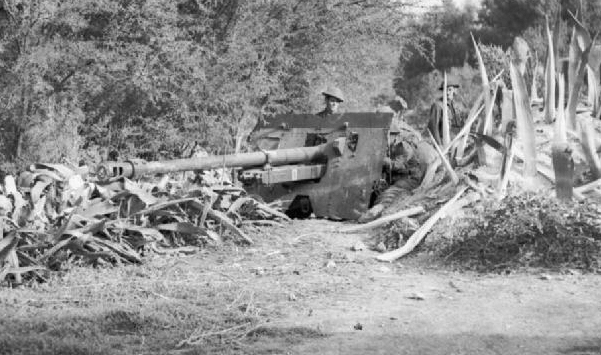
| Year | 1943 |
| Weapon Type | Heavy Anti-Tank Gun |
| Origin & Designer | Britain/State Factories |
| Numbers Produced | 15.000 |
| Crew | [@crew] |
| Calibre | 76.2mm (76.2x583R) |
| Elevation | -6° to +16.5° |
| Traverse | 60° |
| Breech | Vertical Block |
| Recoil | Hydropneumatic |
| Gun Sight | No.41 Mk. II |
| Gun Mount | [@gun_mounts] |
| Carriage | Split Trail |
| Trailers | [@trailers] |
| Gun Shield | [@gun_shield] |
| Armoured Plate | [@armoured_plate] |
| Barrel Length | 4.203.7mm (L/55) |
| Overall Length | 7.54m |
| Width | 2.23m |
| Height | 1.80m |
| Weight | [@weight] |
| Round Weight | 7.71 kg |
| Muzzle Velocity | 884 m/s |
| Feed | [@feed] |
| Magazine Capacity | [@magazine_capacity] |
| Practical Rate of Fire | [@practical_rate_of_fire] |
| Rate of Fire | 12 r.p.m. |
| Maximum Rate of Fire | [@maximum_rate_of_fire] |
| Maximum Ceiling | [@maximum_ceiling] |
| Maximum Ground Range | [@maximum_ground_range] |
| Maximum Range | 9.144m |
| Armour Penetration | 130mm @ 500m @ 30°. 119mm @ 1000m @ 30°. |
| Traction | Morris Quad, M3 Half-Track or Crusader Tank |
| Variants | [@variants] |
| Notes | The 17 pounder was developed to counter the threat posed by heavy German armour. This threat was recognised even before its predecessor the 6 pounder was introduced. In a rush to get the gun into action, the early versions were mounted 25 pounder carriages and these were known as 17/25 pounders. Around a hundred were sent out to North Africa in 1943 and were soon used in combat. All other models were mounted on a new split trail chassis. The gun itself was very heavy and was initially issued to armoured Infantry brigades, with their 6 pounders being passed on to Infantry divisions. The gun was a potent tank killer especially when using APDS ammunition. It served in Italy and Northern Europe until the wars end and also saw action in the Korean War. |